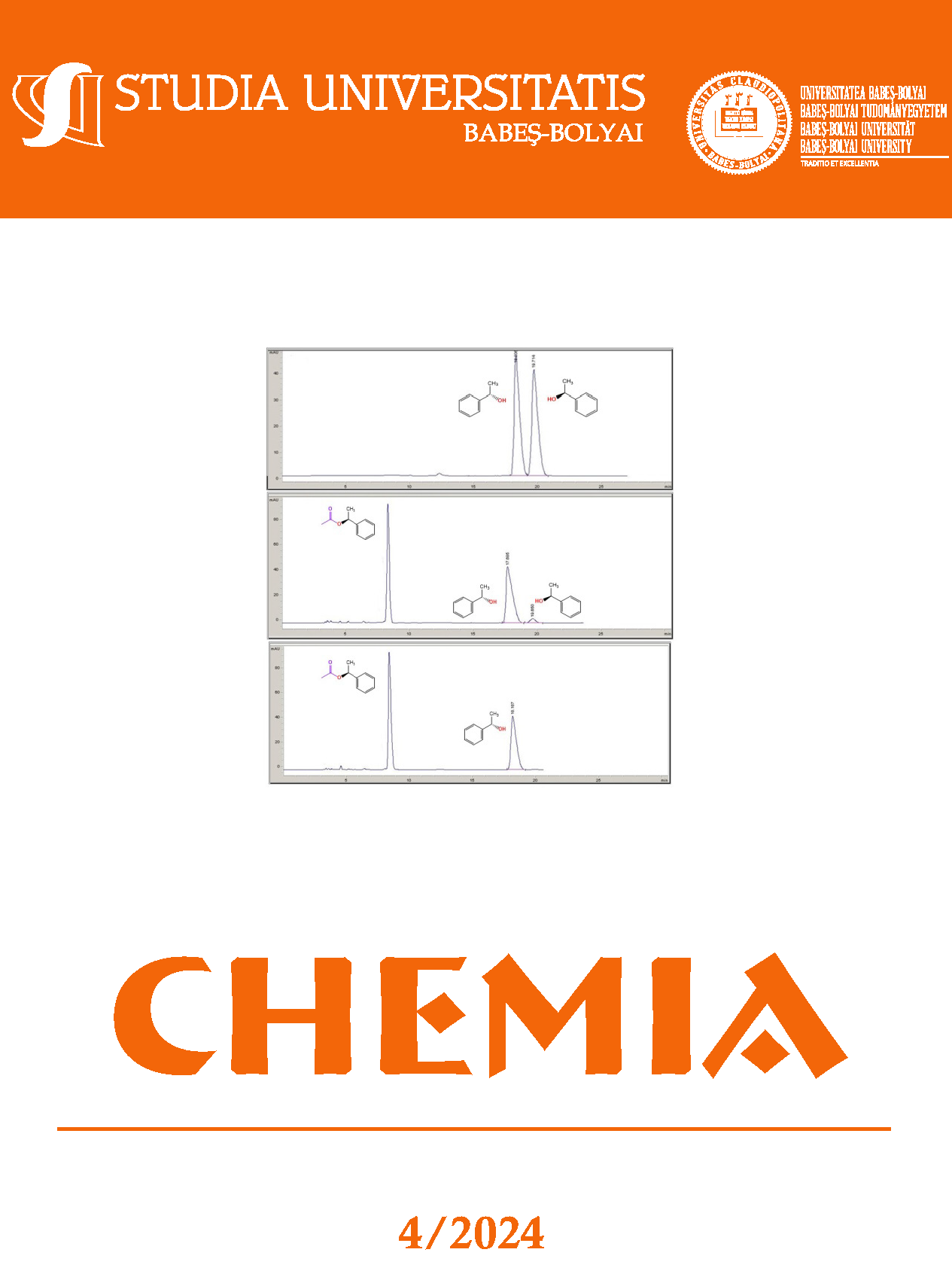Valuation of the Energy Potential of Agrozootehnic Waste
DOI:
https://doi.org/10.24193/subbchem.2024.4.11Keywords:
animal waste, organic waste, anaerobic digestion, biogas, agro-food byproductsAbstract
The anaerobic digestion of animal manure is a promising treatment solution allowing its partial conversion to energy, in the form of biogas. Anaerobic digestion technology is thus considered not only as a way to solve environmental problems, but also as a potential source of energy, while also contributing to solving economic and social problems. This research investigates the potential of poultry, cattle and pig waste for biogas production through the anaerobic digestion process. A number of 15 recipes had been prepared and studied, each consisting of a mixture of organic materials with a concentration of 10% total solids (animal waste, vegetable waste, food waste), in different proportions. The raw material mixtures (representing the substrates) respected a C/N ratio between 15 and 25. The substrate composition influence on the production of biogas was investigated. Different types of animal manure have been found to produce varying rates of biogas, with certain types yielding higher or more stable levels. In this installation, efficient biogas production was observed after seven days of anaerobic digestion, with the most effective mixtures being those with a higher proportion of grass.
References
1. A. Vijin Prabhu, A.R. Sivaram, N. Prabhu, A. Sundaramahalingam, Materials Today: Proceedings, 2021, 45, 7994-7999.
2. A. Hilkiah Igoni, M.J. Ayotamuno, C.L. Eze, S.O.T. Ogaji, S.D. Probert, Appl. Energy, 2008, 85, 430–438.
3. R.S. Khoiyangbam, N. Gupta, S. Kuma, Biogas technology towards sustainable development, Edition: 1, Publisher: TERI Press The Energy and Resources Institute Darbari Seth Block IHC Complex Lodhi Road, New Delhi, 2011.
4. D. Deublein, A. Steinhauser, Biogas in Biogas from Waste and Renewable Resources: An Introduction, Edition: 1, Publisher: 2008, online, Chapter 1, pp. 49-56.
5. N. Nwokolo, P. Mukumba, K. Obileke, M. Enebe, Processes, 2020, 8, 1224.
6. A. Schnürer, Å. Jarvis, Microbiological handbook for biogas plants, Swedish Waste Management U2009:03, Swedish Gas Centre Report 207, 2010.
7. S. Sutaryo, Department of Engineering, Aarhus University, Technical Report BCE-TR-E, 2012, 1, 3.
8. A. Babaee, J. Shayegan, A. Roshani, Journal of Environmental Health Sciences & Engineering, 2013, 1, 11–15.
9. H. Fredriksson, A. Baky, S. Bernesson, Å. Nordberg, O. Norén, P. Hansson, Agricultural Systems, 2006, 89,184–203.
10. J. G. Neto, L. V. Ozorio, T. C. Campos de Abreu, B. Ferreira dos Santos, F. Pradelle, Fuel, 2021, 285.
11. BPC Instruments AB - Gas Endeavour, Automatic Gas Flow Measuring System - Operation and Maintenance Manual, Version 1.2.1, 2022.
12. J. Baruah J., B. K. Nath, R. Sharma, S. Kumar, R. C. Deka, D. C. Baruah & E. Kalita, Frontiers in Energy Research, 2018, 6, 141.
13. Z. Song, C. Zhang, Bioresource Technology, 2015,186, 128–135.
14. S.S. Sadaka, C.R. Engler, Compost Science & Utilization, 2003, 11, 2003, 361-369.
Downloads
Published
How to Cite
Issue
Section
License
Copyright (c) 2024 Studia Universitatis Babeș-Bolyai Chemia

This work is licensed under a Creative Commons Attribution-NonCommercial-NoDerivatives 4.0 International License.



